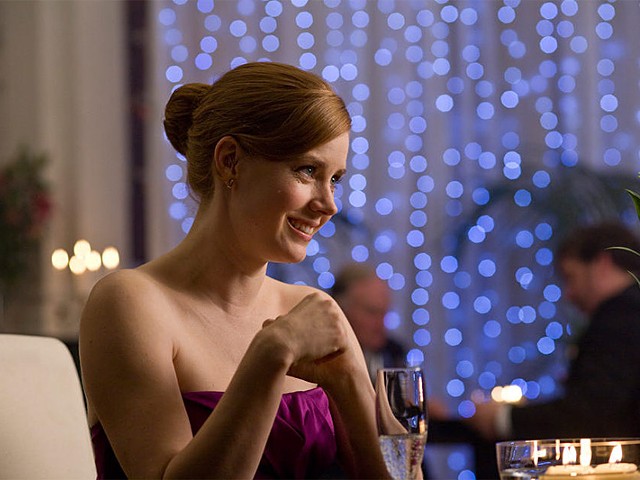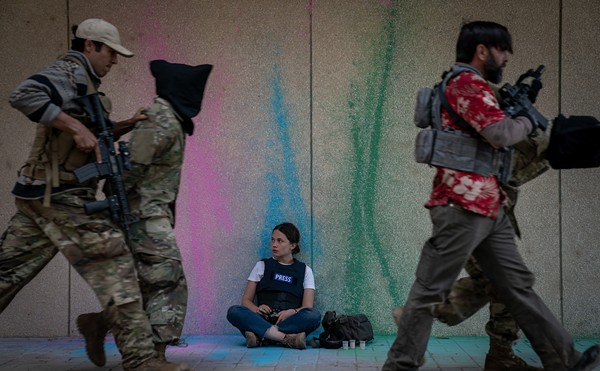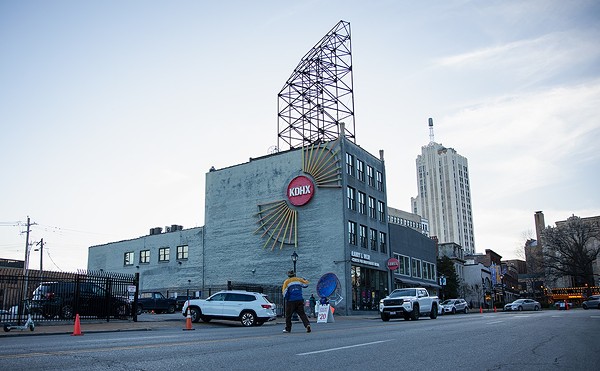A one-film cabinet of curiosities, The Lovely Bones turns the most successful CGI director of the '00s loose on one of the decade's prime literary phenomena: Cults collide as Peter "Lord of the Rings" Jackson tackles Alice Sebold's best-selling New Age gothic, the story of a rape-murder-dismemberment and its aftermath, narrated by its fourteen-year-old victim from heaven.
A season that has already brought adaptations of a once-controversial classic picture book about a disturbed child, and its grown-up Doomsday evil twin ("normal" child on the road in a disturbed world) is capped by a vision dramatizing the ultimate parental nightmare. In Jackson's hands, The Lovely Bones is doubly appalling. Part Disney's Alice in Wonderland, part Fritz Lang's M — the movie is horrific yet cloying, alternately distended and abrupt, sometimes poignant and often ridiculous.
The Lovely Bones begins with a flurry of activity, both inside the snow globe that's introduced as a metaphor for the afterlife and outside in the prosaic, comforting suburban universe into which Susie (Saoirse Ronan) was born. The young actress, outstanding as the child snitch in Atonement, is engagingly hyperexpressive, and the filmmaking is similarly kinetic, full of floating camera moves and breakneck cross-cutting. Jackson hits the high points of Susie's young life, speeding toward her brutal demise — but not so quickly as to bypass the novel's provocative cautionary setup.
Published in the aftermath of 9/11, The Lovely Bones' adroitly comforting synthesis of Our Town and Anne Frank was widely appreciated as a lyrical tale of grief and reconciliation, but it is also a malign fable of adolescent coming-of-age. Susie's first kiss, about to be delivered by her first crush, is interrupted — and rudely deromanticized — by the school principal's irate tantrum over the anatomically correct female nude that Susie's weird friend drew for art class. Ignoring this omen and walking on air in anticipation of her first date, Susie is enticed down the rabbit hole that her strenuously innocuous serial-killing neighbor (Stanley Tucci, barely recognizable and supremely creepy) has prepared as her death chamber. She leaves this world horrendously despoiled yet essentially innocent.
Punishing sexual curiosity is not a foreign notion for Jackson, who broke into movies making gross-out horror flicks. Fans will remember the scene in Dead Alive in which a chaste lad's first kiss triggers his mother's transformation into a flesh-eating zombie. Still, he has the tact to omit the gruesome details of Susie's murder — and will later expunge the ludicrous scene in which Sebold allows the girl's ecstatic return to Earth.
Unfortunately, he shows no such discretion in literalizing the novel's vague metaphysics. Once upon a time — see his 1994 comedy of adolescent matricide, Heavenly Creatures — Jackson sensationally infused movie naturalism with garish special effects. Here, all is subservient to the digital splendors of Susie's heavenly abode — a constantly mutating realm of spacious skies, purple mountains and undulating amber waves of grain, not to mention crystal beaches, foggy forests and the peripatetic cosmic gazebo from which she observes her family and murderer's doings.
All characterizations are sacrificed to steep in Susie's celestial surroundings. Initially touching, her parents (Rachel Weisz and Mark Wahlberg) are dwarfed by the ongoing pyrotechnics. Stealing scenes as Susie's cheerfully dissolute grandma, Susan Sarandon struggles to provide the reality principle — in vain. Although the novel also drowned in a vat of syrup, Sebold got by for nearly 100 pages on the unsentimental clarity of her style and sustained verisimilitude of the narrator's adolescent voice. Jackson demonstrates no such chops. Indeed, he consistently undermines the movie's uncanny elements by overdramatizing events, such as Susie's fleeting visitations, that have their own inherent power.
As the novel suggests a form of talk therapy, Jackson's adaptation is a misguided tribute to the magic of the movies — which have always specialized in reanimating the dead. But there is something to be said for representing the actual world and there are some things that can only be visualized in the mind's eye. What heaven could have been more radiant than a child's view of her suburban neighborhood — what spectacle more divine than Susan Sarandon's wig?





